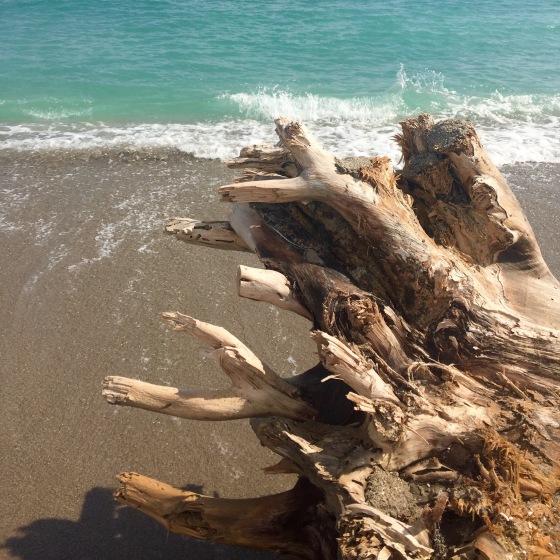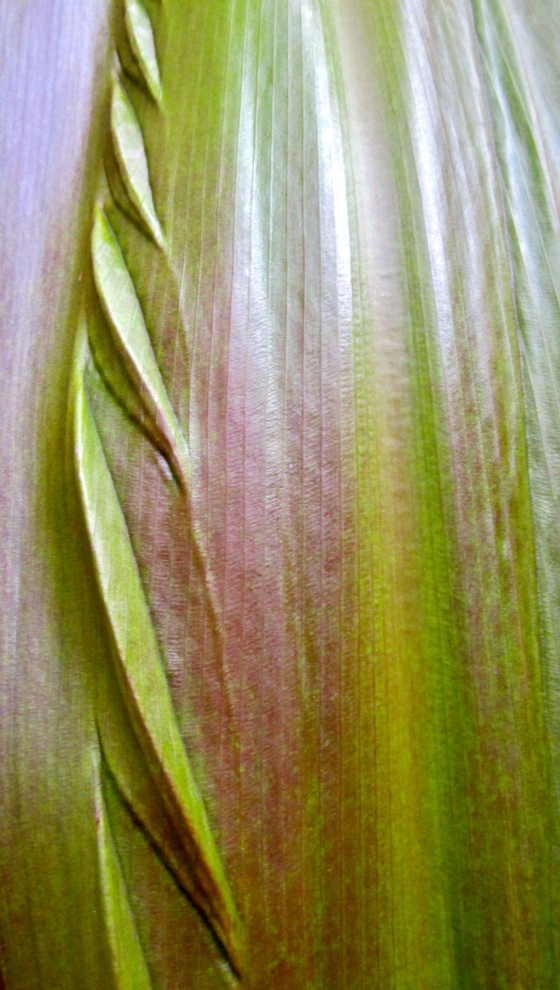
The Jupiter inlet Lighthouse was officially lit in 1860 and is the oldest existing structure in Palm Beach County.
 The lighthouse stands 1/2 mile from the Atlantic Ocean. In 2008, Congress designated the lighthouse and its surrounding 120 acres as an Outstanding Natural Area (ONA) in the National Landscape Conservation System, one of only three ONAs in the U.S.
The lighthouse stands 1/2 mile from the Atlantic Ocean. In 2008, Congress designated the lighthouse and its surrounding 120 acres as an Outstanding Natural Area (ONA) in the National Landscape Conservation System, one of only three ONAs in the U.S.

While its turquoise waters are extraordinarily beautiful, Jupiter Inlet, at 400 feet wide, is the most dangerous inlet in Palm Beach County. Jupiter gets the big surf breaking in the mouth of the inlet, and what causes the danger is the buildup of sand – shoaling – about 1,300 feet offshore from the inlet. The flow from the Loxahatchee River emptying into the Atlantic Ocean pushes out to the sand, building the crescent-shaped shoal about 5 feet deep, making for unpredictable waves.
 The lighthouse was built of brick shipped on barges from Philadelphia and then later painted red in 1910. Coastal lighthouses have different markings to enable ships to determine their location during daylight. The daymark for the Jupiter Lighthouse is red with a black lantern.
The lighthouse was built of brick shipped on barges from Philadelphia and then later painted red in 1910. Coastal lighthouses have different markings to enable ships to determine their location during daylight. The daymark for the Jupiter Lighthouse is red with a black lantern.
 To someone on an airplane, the lighthouse beam would be visible 40 to 50 miles away.
To someone on an airplane, the lighthouse beam would be visible 40 to 50 miles away.
 Evening brings out exquisite gem-like colors along the inlet.
Evening brings out exquisite gem-like colors along the inlet.
 The range of the lighthouse beam is 26 miles, which is the farthest distance that the light can be seen on a ship at sea. The Fresnel lens was manufactured in Paris.
The range of the lighthouse beam is 26 miles, which is the farthest distance that the light can be seen on a ship at sea. The Fresnel lens was manufactured in Paris.

The lighthouse was automated in 1987, and a photo electronic cell turns the bulb and motor on when the sun sets and off when the sun rises.
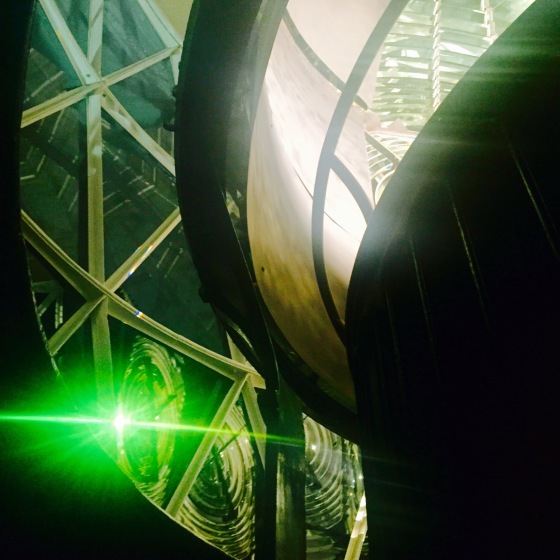
The lamp is 1000 watts, and has an identical spare that turns on whenever the first bulb fails.

The lighthouse has 105 cast iron steps, spiraling counterclockwise around a central column with three landings.

The lighthouse is 108 feet tall and sits on a 48-foot hill. Both the Lighthouse and the archaeological site are on the National Register of Historic Places.




















 For whatever we lose (like a you or me), it’s always ourselves we find in the sea.
For whatever we lose (like a you or me), it’s always ourselves we find in the sea.
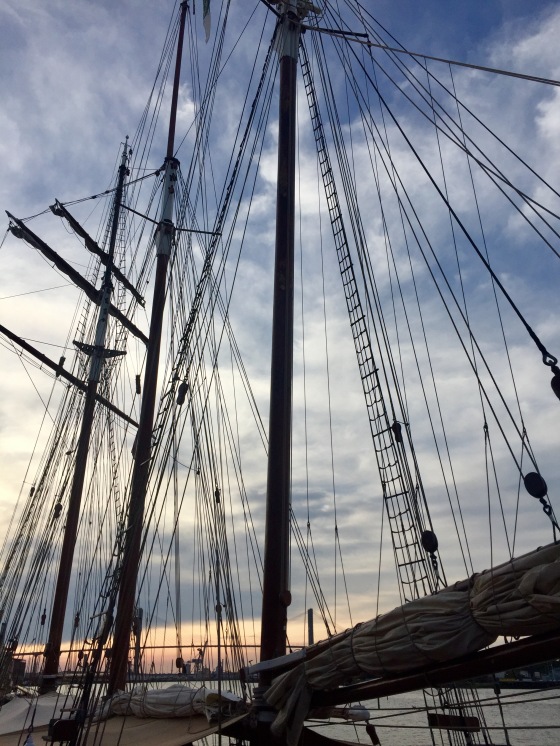













 Third painting in my mini series, “Fish Tales.” This is a shad lure, which still has a snippet of fishing line attached in the ring to the left of the eye. Pretty sure this one saw some action.
Third painting in my mini series, “Fish Tales.” This is a shad lure, which still has a snippet of fishing line attached in the ring to the left of the eye. Pretty sure this one saw some action.










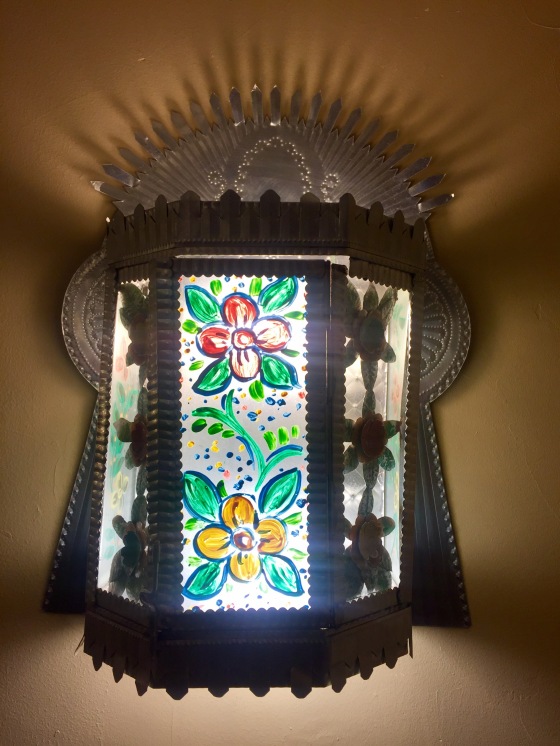


 A memorable ride through the mountains of historic Georgetown, Colorado on the Georgetown Loop Railroad … Christmas time is here …
A memorable ride through the mountains of historic Georgetown, Colorado on the Georgetown Loop Railroad … Christmas time is here … Family Q Christmas
Family Q Christmas
 “Palm Beach” 48×36 acrylic on canvas inspired by the lush tropical greenery on the southern Florida coast
“Palm Beach” 48×36 acrylic on canvas inspired by the lush tropical greenery on the southern Florida coast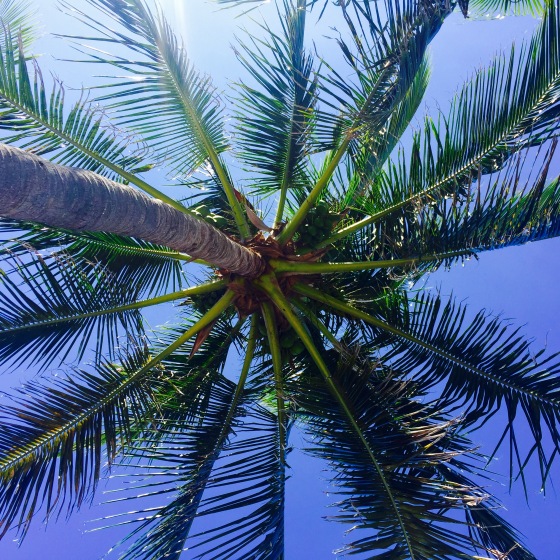
 Chilly days on Smith Lake in Wash Park
Chilly days on Smith Lake in Wash Park

 “Autumn reminds us how beautiful it is to let things go…”
“Autumn reminds us how beautiful it is to let things go…”
 My constant inspiration …
My constant inspiration …  Final touches completed to “Autumn Ascending” 30×40 acrylic on canvas inspired by the advance of Autumn’s seasonal colors
Final touches completed to “Autumn Ascending” 30×40 acrylic on canvas inspired by the advance of Autumn’s seasonal colors




















 That’s a wrap in the studio this beautiful Sunday morning on the coast! This is the newest piece for The Drops of Jupiter Collection titled “After the Rain” 30×48 acrylic on canvas inspired by the lavender skies and aqua blue hues of Jupiter Beach after a summer rain.
That’s a wrap in the studio this beautiful Sunday morning on the coast! This is the newest piece for The Drops of Jupiter Collection titled “After the Rain” 30×48 acrylic on canvas inspired by the lavender skies and aqua blue hues of Jupiter Beach after a summer rain.  “Clouds come floating into my life, no longer to carry rain or usher storm, but to add color to my sunset sky.” ~Rabindranath Tagore
“Clouds come floating into my life, no longer to carry rain or usher storm, but to add color to my sunset sky.” ~Rabindranath Tagore

























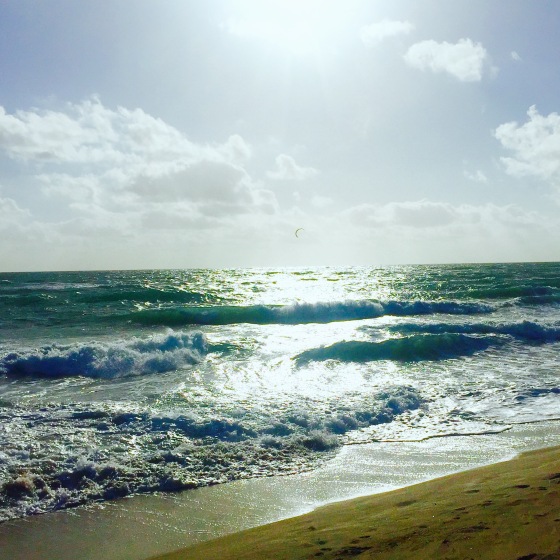 Back home to the southern Florida coast to breathe in the salty air
Back home to the southern Florida coast to breathe in the salty air


























